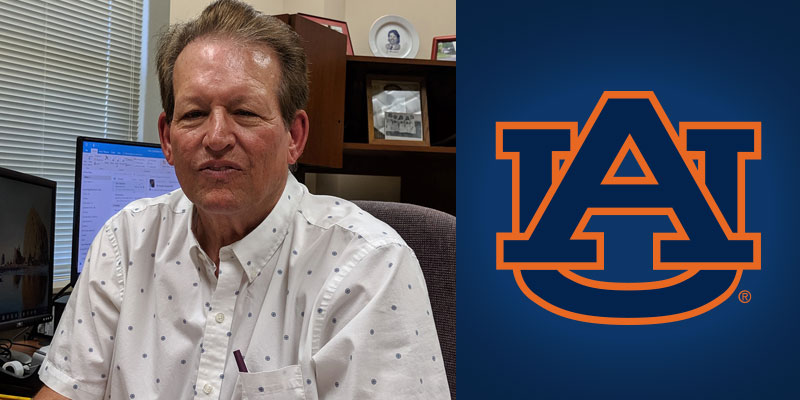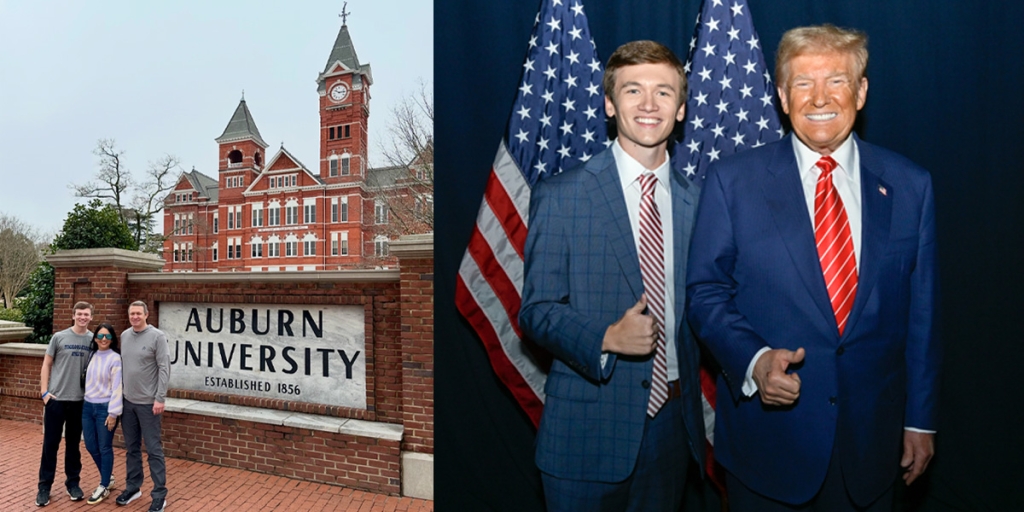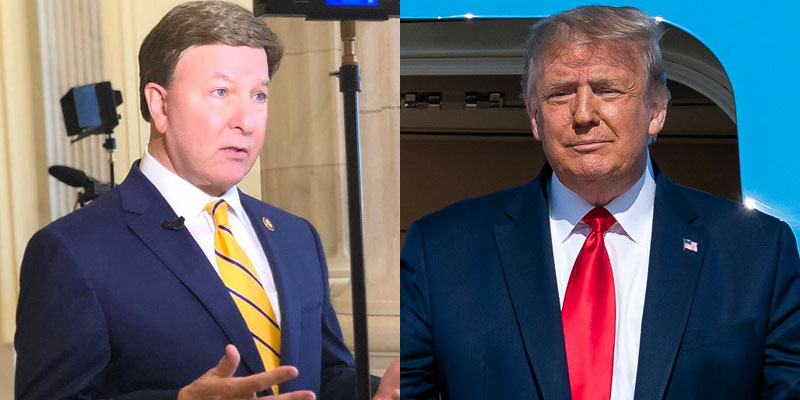The purpose of vaccination is to stimulate the immune response to prevent a disease. A person who is rendered resistant to a disease by vaccination is termed “actively immunized.” Active immunity may also result from recovery from a natural outbreak of a disease. Immunity transferred from plasma from a donor, which contains antibodies from a prior infection or vaccination is referred to as “passive immunity.” This type of immunity is immediate, but only temporary and is used mainly for treatment of hospitalized individuals. Various laboratories are also developing synthetic antibodies called “monoclonal antibodies” in cell cultures, which can be mass-produced for treatment of seriously ill patients.
Vaccines can contain either live or inactivate organisms. In the development of a live vaccines, the organism can be “attenuated” or weakened. Because live vaccine can replicate in humans, they can be given by nasal or oral route but may produce a mild form of the disease. Vaccines containing inactivate organisms are safer because they cannot produce a mild form of the disease. However, inactivated vaccines must be injected and require an adjuvant, a kind of immune response booster, which will increase the immune response. Adjuvants are usually composed of an oil base that serves to slowly release vaccine particles, which continually stimulate the immune response over time. The adjuvants are typically what causes some pain and inflammation after injection.
For some vaccines only a portion of the organism can be used to immunize. This is referred to as a subunit vaccine. Subunit vaccines are commonly used against influenza. SARS-CoV-2 virus vaccines have been recently developed using only the immunogenic spike protein of the virus or the RNA or DNA viral genes, which code for the spike protein. In the case of the SARS-CoV-2 virus, the portion of its spike protein can induce antibodies which may block the entrance of the virus into the human’s cell membrane. Another type of vaccine is molecular (recombinant) vaccine, which contains an attenuated adenovirus vaccine (vector) combined with genes of the spike protein of the SARS-CoV-2 to trigger production of the immune system to destroy both the adenovirus vector and the SARS-CoV-2 virus. The adenovirus, which can cause a cold in humans, has been genetically altered so it is not able to replicate in humans and will not produce disease making it a safe vaccine.
There is always an interval of time between the administration of a vaccine and development of immunity. This varies between vaccines, but usually takes from seven to 14 days. Vaccines can induce a state of immunity, which can persist anywhere from one year to a lifetime. In the case of vaccine lasting only one year, partial protection can last for longer periods. Older individuals or those with reduced immunity do not respond well to vaccines. The capacity to fully respond to vaccines is termed “immunologically competence.” Similarly, to influenza virus vaccines immunologically compromised individuals may need a larger amount of vaccine to induce adequate immunity. At this time no one knows how long immunity will last against a COVID19 vaccine or if a booster vaccine will need to be administered.
Currently there are more than 160 potential vaccines for COVID-19 under study; optimistic experts hope that a viable vaccine may be ready by the end of 2020. Other experts caution that the timeline may be unrealistic. Only a small number of those vaccine candidates are being tested on people, and chances are many of the other projects won’t survive beyond the laboratory stage. Even so, vaccine experts point out that funding has been plentiful, many different approaches are under study and collaborations have developed between small firms developing the vaccines and large drug companies with the capacity to mass produce them—all giving reason for hope. The U.S. said it would fund and conduct the phase III trials—the final step to determine how well the vaccine works and if it’s safe—of three candidates: Moderna Inc., AstraZeneca Inc. and Johnson & Johnson Inc. The Moderna and AstraZeneca vaccines are already being tested in people, while Johnson & Johnson recently announced that it will begin its testing in the second half of July.
Here are some of the vaccines that are furthest along, with details on how the vaccine works. Moderna’s vaccine, mRNA-1273, uses messenger RNA, an approach that does not require a virus to make the vaccine. The messenger RNA, or mRNA, carries instructions for making the spike protein, a key protein on the surface of the SARS-CoV-2 virus that allows the virus to enter cells when a person gets infected. When the vaccine with this instruction molecule is injected, it goes to the immune cells and instructs them to make copies of the spike protein, acting as if the cells have been infected with the coronavirus. Allowing other immune cells to develop ways to protect you gives immunity.
This mRNA-1273 vaccine is in phase II of its clinical trial, designed to evaluate safety and effectiveness. Moderna, working with the National Institute of Allergy and Infectious Diseases, intends to enroll 600 healthy volunteers equally divided into two age groups: 18 to 55, and 55 and older. The company announced on June 11 that it will start phase III of its trial in July with 30,000 volunteers. Phase III, the final clinical trial phase, evaluates effectiveness in a much larger group and compares how well the vaccine works compared to a placebo (a substance that does not contain the vaccine). Moderna will test a 100-microgram dose and said the company is on track to deliver 500 million doses per year. In mid-May, the company announced that all eight initial trial volunteers given two different dose amounts reached or surpassed the level of antibodies capable of neutralizing the virus.
University of Oxford scientists are partnering with AstraZeneca to develop a COVID-19 recombinant adenovirus vaccine made from a weakened version of a common cold virus taken from chimpanzees. A number of companies are using the recombinant adenovirus vaccine technique, because prior studies with the SARS and MERS coronaviruses have shown efficacy in animal studies. Recombinant adenovirus is genetically altered so it can’t reproduce itself in humans. A phase I/II clinical trial began in April in the U.K. to assess its safety and how well it works in more than 1,000 healthy volunteers 18 to 55 years old. Now, recruiting has begun for phase II/III trials, which will enroll up to 10,260 adults and children. For both phase II and III, volunteers will receive one or two doses of either the COVID-19 vaccine or a licensed vaccine that will be used as a control for comparison. In early June, Brazil, hard hit with COVID-19 cases, joined the clinical trials, planning to test 2,000 volunteers there. After reaching a license agreement with the University of Oxford and others, AstraZeneca agreed to supply more than 2 billion doses globally, anticipating delivery of 400 million doses before the end of 2020.
Pfizer Inc. and BioNTech Inc. are testing four vaccines, each using messenger RNA, with a different combination of mRNA to targeted antigens (to produce antibodies). Called BNT162, volunteers in Germany and the U.S. have received the vaccine in a phase I/II clinical trial. This trial will evaluate the safety, ability to give immunity and the optimal dose of the four candidates in a single and continuous study. Initially they are testing the vaccine on people 18 to 55 years of age. Once a given dose level is proven safe and effective, older adults will be immunized. Pfizer is predicting the production of millions of vaccine doses in 2020, increasing to hundreds of millions in 2021. Manufacturing sites have been identified both in the U.S. and elsewhere.
Inovio Inc. has developed a vaccine, INO-4800, which is a DNA vaccine in phase I clinical trials, with 40 volunteers. The technology uses DNA designed to produce a specific immune response. A handheld smart device uses a brief electrical pulse to open small pores in the skin to deliver the vaccine. Once the DNA is inside a cell, it instructs it to make many copies of the artificial DNA, and this stimulates the body’s natural immune response. Results from the U.S. phase I trial are expected in June, and a phase II/III trial is expected then to begin. Human trials are also expected to begin this summer in China and South Korea. Multiple partners and collaborators are involved, including the Bill & Melinda Gates Foundation, the National Institutes of Health and others.
CanSino Biologics Inc. in Tianjin, China, is working with the Beijing Institute of Biotechnology on a coronavirus vaccine using a type of genetically altered adenovirus known as Ad-5. The platform has been used successfully to develop the Ebola virus vaccine. In late May, researchers reported on results of the phase I safety study, in which 108 people got three doses (low, middle, high) of the vaccine. Most volunteers developed immune responses, but fewer had the neutralizing antibodies experts say are crucial to fight off the virus. The company launched phase II in mid-April, with over 500 enrolled.
Sinovac Biotech’s Inc. vaccine, CoronaVac, uses an inactivated version of the virus. Early results of a Phase II clinical trial released in June show that the vaccine induced antibodies to neutralize the virus after 14 days in 90 percent of people who received it. The vaccine requires two injections, given two weeks apart, according to the company. No serious side effects have been reported in either phase I or II trials, which included 743 healthy volunteers. Sinovac will partner with Instituto Butantan Inc. in Brazil to launch a phase III trial. The company said it will develop the vaccine for global use.
Scientists at Imperial College London have developed a vaccine using a concept called ‘”self-amplifying RNA.” The vaccine uses synthetic strands of genetic code, or RNA, based on the genetic material known about the coronavirus. Once injected, that RNA makes copies of itself, then instructs the body’s cells to make copies of the spike protein found on the outside of the virus. This is meant to train the immune system to respond to and fight off the coronavirus. Investigators launched a combined phase I/II study the week of June 15, initially giving the vaccine to 300 healthy volunteers. They will receive two doses over two visits, separated by a four-week interval. If the vaccine is shown to be safe and to produce an immune response, phase III trials would be launched later this year with about 6,000 volunteers. Investigators hope the vaccine could be available by spring 2021.
Johnson & Johnson said it expects to start testing its recombinant vaccine in people in the second half of July. The vaccine combines spike protein gene from the vectored coronavirus with a modified adenovirus. The first trial will include more than 1,000 healthy adults aged 18 to 55 and others 65 and older and will take place in the U.S. and Belgium.
The Trump administration has chosen five companies for “Operation Warp Speed,” the national program to accelerate the development, production and distribution of COVID-19 vaccines, treatments and diagnostics. They are: Moderna, Johnson & Johnson, Merck Inc., Pfizer and BioNTech, and AstraZeneca/Oxford University. Beyond investing in the vaccines, the U.S program will also oversee a plan to streamline and coordinate the testing of vaccines. The five potential vaccines will be evaluated using the same measurements to make comparisons easier, and a single, independent monitoring board will decide if any of vaccines have been proved to work.
Researchers will have access to at least 72 testing sites that have been identified across the country and an equal number in other countries, said Dr. Larry Corey, an expert in vaccine development at the Fred Hutchinson Cancer Research Center who is helping to orchestrate the government program. The plan relies heavily on testing networks that have been built over the years for work on vaccines against HIV and other pathogens, according to Drs. Corey and Fauci. Testing sites are often based at university medical centers. If researchers can recruit a sufficiently large pool of participants in areas where the virus is infecting high numbers of people, less time probably will be needed to know if a vaccine works. Doing so can be a challenge, especially when dealing with a new virus that is poorly understood. Where the virus will be most active when a vaccine is ready for large-scale testing, for example, is “a moving target,” Corey said. “We have a virus that is sweeping through different areas,” Corey said. “How do we match our clinical trial sites with where the viral activity is the highest?” Brazil and other countries that may be experiencing outbreaks could be chosen for rapid efficacy testing.
The participation of 25,000 to 30,000 people for each vaccine will be needed in the final phase III stage of tests for each of the five vaccines. But it will be up to an independent board of outside experts to decide if that is actually the case for each vaccine. Moderna and AstraZeneca and, later, the other vaccines will be tested in the U.S. government program. To do so, statisticians on the board will perform complex calculations based on the data collected in the large trials to determine whether a vaccine has had a genuine effect that cannot have been due to chance and to estimate the specific level of protection it provides. If a vaccine is, in fact, very effective, those results will become clear quickly because the difference between people who are vaccinated and those who receive the placebo will be stark. In that case, the monitoring board could declare the vaccine a success, clearing the way for it to be put into use. The board probably would need longer to reach a decision about a lower-performing vaccine since it would take time to collect sufficient data to establish its effectiveness.
How many doses of a vaccine could be made by the end of the year is an open question? Pharmaceutical companies have announced partnerships with manufacturing companies as well as plans to begin mass-manufacturing their vaccines before it is known if they work. When the operations are up and running, tens of millions of doses of a vaccine could be produced each month, but getting the specialized equipment, staff and materials needed to produce the vaccines takes time.
At this time, few, if any, viral vaccine experts believe that an effective vaccine will be developed before the first of the year. Politicians are pressuring for a vaccine to be marketable before the end of the year. However, marketing a vaccine which has not undergone sufficient safety and efficacy studies could result in serious long-term effects in the public’s perception of the proficiency of scientific and medical agencies, and they may be hesitant to receive a more safe and effective vaccine developed in the future to prevent COVID19, influenza or other common diseases. Vaccines typically take several years to develop with testing for efficacy and longevity against natural infection being required. Additionally, some viruses can mutate, requiring new vaccines to be developed as currently required for influenza viruses. However, no significant mutations have been noted in the spike protein gene with the SARS-CoV-2 virus.
Regardless of when an effective vaccine is developed, the first doses will be given to front line individuals, which would include medical personal, EMTs, fire medics, police officers, firemen and military personnel, etc. Next in line would probably be politicians, nursing homes patients and care takers, prisons, people with preexisting health problems and those workers employed in businesses considered essential by federal, state and local governments, such as pharmaceutical, agricultural, food service, banks, gas stations, funeral homes, etc. Vaccines available for the general public in the U.S. and other first-world countries could be given at least three months after these groups. Second- and third-world countries, which lack modern medical infrastructure, could take an additional six months to be vaccinated.
Regardless of when and if effective vaccines are mass produced to vaccinate the world’s population, there will a significant number of people, who, for one reason or another, will refuse to be vaccinated. Therefore, mandatory vaccination cards could be required by various federal, state or local government agencies to be shown to enter schools, planes, mass transit, obtain drivers licenses, entrance into foreign countries or large events with several thousand attendees, etc. The Trump administration has promised that vaccines will be free for all individuals regardless of whether they have medical insurance or can afford to pay for them. In addition, a small economic incentive may contribute to the number of those people willing to be vaccinated in poor neighborhoods, as is currently available for vaccination against influenza.
The term “herd immunity” is often used to determine the percent of population that has develop immunity either in the form of a vaccine or natural infections. Herd immunity occurs when a large portion of a community (the herd) becomes immune to a disease, making the spread of disease from person to person unlikely. As a result, the whole community becomes protected—not just those who are immune. Often, a percentage of the population must be capable of getting a disease in order for it to spread. This is called a threshold proportion. If the proportion of the population that is immune to the disease is greater than this threshold, the spread of the disease will decline. This is known as the herd immunity threshold. For most diseases 60 percent to 90 percent of the population needs to have immunity to stop the spread on the disease. However, currently no one knows what percent is needed for “herd immunity “against the COVID19 virus.
So far, no vaccine has ever been developed against a human coronavirus. That being said, the most important current procedures, which are needed to prevent the spread of the virus, are continuation of CDC and other medical, research and governmental agencies recommendations. Keep in mind some people may have the COVID-19 virus and spread it to others, even if they don’t have symptoms or don’t know they have COVID-19.
Important viral mitigation procedures are to wash your hands often with soap and water for least 20 seconds or use an alcohol-based hand sanitizer that contains at least 60 percent alcohol. Avoiding large gathering, practicing social distancing and wear a mask in public. Cover your mouth and nose with your elbow or a tissue when you cough or sneeze. Throw away the used tissue. Avoid touching your eyes, nose and mouth. Avoid sharing dishes, glasses, bedding and other household items if you’re sick. Clean and disinfect high-touch surfaces, such as doorknobs, light switches, electronics and counters, daily. Stay home from work, school and public areas if you’re sick, unless you’re going to get medical care. Daily testing of your body temperature is also effective. Use telemedicine if you are sick and need to talk with a doctor and use on-line communications for working at home when possible. Avoid public transportation, taxis and ridesharing if you’re sick.
Currently many people believe that the virus will disappear in hot weather and a second or third wave will not occur, and they want full opening of the economy and life to return to what it was prior to the dawn of the pandemic. Unfortunately, most medical experts do not believe that this scenario has or will occur, and that state and local governments have already rushed too fast to reopen society for economic reasons. The mantra of many people, agencies and companies is that they are tired of COVID19 isolation and will not adhered to important viral mitigation procedures. They believe that the economic pain of isolation is worse than the disease itself. Only time will tell if their beliefs are correct.
Regardless of when and if effective vaccines are developed, more rapid effective testing for the virus and/or antibodies with contact tracing needs to be developed and utilized to avoid the spread of the virus. Another avenue that needs to be addressed is the development of effective in-home antiviral medications, as are currently available for influenza and HIV infections, that will treat symptomatic people and prevent viral spread during a 14-day quarantine. Currently only in-hospital antiviral therapy is effective to reduce the severity of critically ill patients. Antiviral treatments will free up hospitals to treat none COVID19 infected patients. According to Dr. Corey, “A virus that we’ve never seen before is unpredictable … We have to anticipate all options.”
Joseph Giambrone is a professor emeritus in Auburn University’s Department of Poultry Science with a joint appointment in the Department of Pathobiology in the College of Veterinary Medicine. During his graduate research career at the University of Delaware, he was part of a research group that developed the first vaccine against an antigenic variant of an avian coronavirus. During a sabbatical leave during his tenure at Auburn, he was part of a research group in Australia that sequenced the entire genome of antigenic variant of a coronavirus of chickens. During his 42-year research career as a molecular virologist, immunologist and epidemiologist, he has made critical advancements in understanding the ecology of viral pathogens, led efforts to improve detection and surveillance of viral diseases and developed new and effective vaccines and vaccine strategies to protect commercially reared chickens as well as pathogens, such as avian influenza viruses, which have spilled over into human populations. His research has had a profound impact on practices used today to reduce the incidence and severity of viral diseases of commercially reared poultry as well in human populations.













